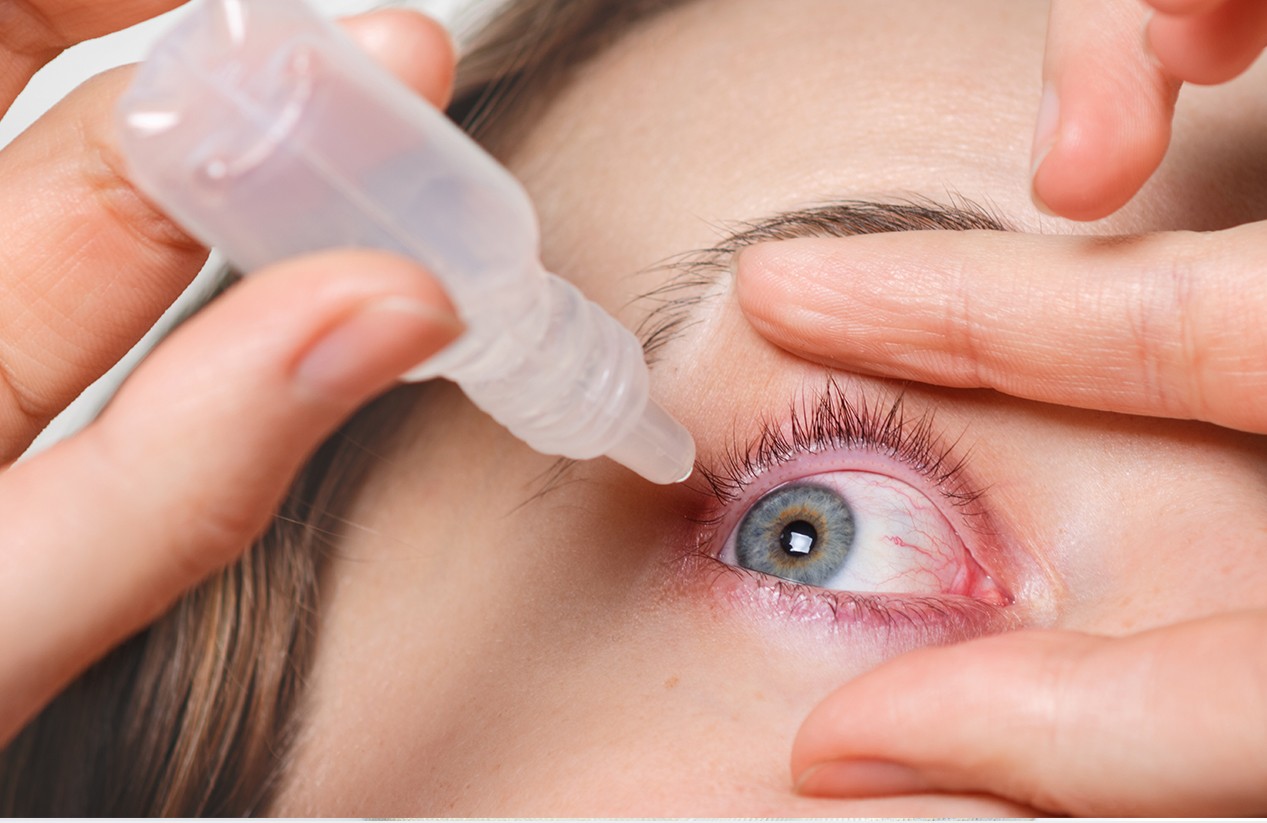- Eyeglasses
- Glasses
- Shop By Frame
- Shop By Style
- Featured
- Premium Selection
- Sunglasses
- Kids' Glasses
- Readers
- Shop By Lens
- Promium Selection
- Accessories
- My Orders
- Order Tracking
- Blog
- Have a Question?
- E-mail:cs@efeglasses.com

Hello everyone, we’re EFE Glasses—a brand committed not only to creating stylish, comfortable eyewear, but also to supporting your eye health through education and prevention tips. A question we often hear from our customers is:“My eyes are red and irritated—how can I tell if it’s allergies or an infection?”
This confusion is common because allergic conjunctivitis and bacterial conjunctivitis (both types of pink eye) share overlapping symptoms. However, the causes and treatments are very different. Today, let’s walk through the differences so you’ll know how to better protect your eyes.
What Is Conjunctivitis?
The conjunctiva is the thin, clear tissue covering the white part of your eye and the inside of your eyelids. When this membrane becomes inflamed, the condition is called conjunctivitis—commonly known as pink eye.
There are several types, but the two most common are allergic conjunctivitis and bacterial conjunctivitis. Both cause red, irritated eyes, but the triggers and treatments differ.
Signs of Allergic Conjunctivitis
As the name suggests, allergic conjunctivitis is triggered by allergens such as:
Pollen, dust, mold, or pet dander
Cosmetics or skin care products
Contact lens solution
Typical symptoms include:
Severe itching — patients often rub their eyes repeatedly
Both eyes affected — usually symmetrical
Watery discharge — clear, thin tears instead of pus
Other allergy symptoms — sneezing or runny nose may appear together
Seasonal patterns — flare-ups often occur in spring or during allergy season
At EFE Glasses, we’ve noticed that many customers experience itchy, watery eyes during pollen-heavy months—often diagnosed as allergic conjunctivitis.

Signs of Bacterial Conjunctivitis
Bacterial conjunctivitis occurs when bacteria such as staphylococcus or streptococcus infect the eye. Poor hygiene, improper contact lens care, or sharing personal items often play a role.
Typical symptoms include:
Thick, sticky discharge — yellow or green, sometimes sealing eyelids shut in the morning
Usually starts in one eye — but can spread to the other
Redness and gritty sensation — feels like sand in the eye
Highly contagious — spreads easily via hands, towels, or close contact
Medical treatment needed — requires antibiotic eye drops or ointment
We often remind our community at EFE Glasses: if your eye discharge is green/yellow and sticky, it’s most likely bacterial conjunctivitis—don’t wait, see an eye doctor for proper treatment.

Quick Comparison: Allergic vs. Bacterial Conjunctivitis
| Feature | Allergic Conjunctivitis | Bacterial Conjunctivitis |
|---|---|---|
| Cause | Allergens (pollen, dust, pets, etc.) | Bacterial infection |
| Itching | Intense itching | Mild or absent |
| Discharge | Watery, clear | Thick, yellow/green pus |
| Eyes Affected | Usually both | Usually starts in one |
| Contagious? | No | Yes, highly |
| Treatment | Avoid allergens, use antihistamine drops | Antibiotic eye drops/ointment |
Easy Way to Tell Them Apart
Severe itching + watery eyes → Likely allergic conjunctivitis
Thick yellow/green pus + eyelids stuck shut → Likely bacterial conjunctivitis
Note: Only an eye doctor can confirm the diagnosis. Don’t self-medicate if symptoms persist.

EFE Glasses’ Everyday Eye Care Tips
Because our mission goes beyond eyewear fashion, here are simple eye health tips from EFE Glasses to help prevent conjunctivitis:
Wash your hands often—avoid touching your eyes unnecessarily
Practice safe contact lens hygiene—don’t overwear or skip cleaning
Limit allergen exposure—wearing blue light glasses or prescription glasses outdoors can help shield eyes from pollen and dust
Use disposable tissues instead of towels to wipe discharge
Seek medical help if redness, discharge, or pain worsens
Final Thoughts
Although both allergic conjunctivitis and bacterial conjunctivitis fall under the umbrella of pink eye, their causes, symptoms, and treatments are very different. Allergic conjunctivitis is an immune reaction with itching and watery discharge, while bacterial conjunctivitis is an infection with sticky pus and high contagiousness.
At EFE Glasses, we care about more than just giving you a stylish pair of frames—we also want to keep your eyes healthy. By understanding these differences, you’ll know when to manage allergies and when to seek medical treatment.
Explore EFE Glasses for comfortable, fashionable eyewear options that not only enhance your look but also support your long-term eye health.
SUBSCRIBE & SAVE
- Shop All
- Best Sellers
- Eyeglasses
- Sunglasses
- Reading Glasses
- Shop By Frame
- Shop By Style
- Glasses Colors
- Black Glasses
- Blue Glasses
- Brown Glasses
- Gold Glasses
- Green Glasses
- Orange Glasses
- Pink Glasses
- Red Glasses
- Yellow Glasses
- Silver Glasses
- White Glasses
- Purple Glasses
- Tortoiseshell Glasses
- Clear Glasses
- Transparent Grey Glasses
- Mens Blue Glasses Frames
- Red Sunglasses
- Rose Gold Glasses
- White Frame Sunglasses
- Black And Clear Eyeglass Frames
- Black And Gold Glasses
- Black And Red Glasses
- Black Glasses For Women
- Black Rectangle Glasses
- Black Rectangle Sunglasses
- Blue Light & Blocking Glasses
- Blue Women Eyeglasses
- Tips & Guides
- About EFE
- Shop



















